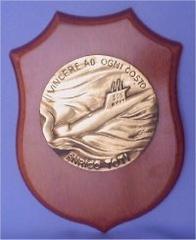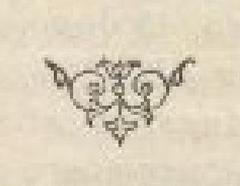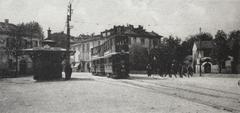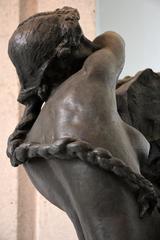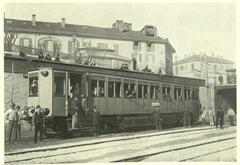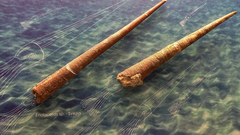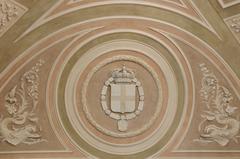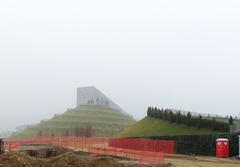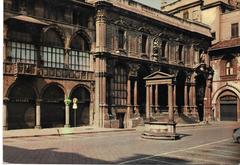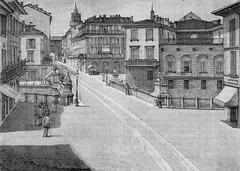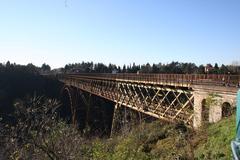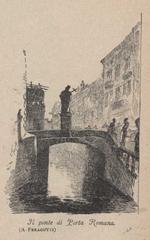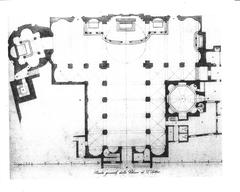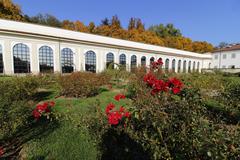Complete Guide to Visiting Palazzo Borromeo in Monza, Italy
Publication Date: 01/08/2024
Introduction to Palazzo Borromeo
Palazzo Borromeo in Monza, Italy, is a historical and architectural marvel that draws visitors from all over the world. Originally constructed in the 14th century as the residence and business headquarters of the Borromeo family, the palace stands as a testament to their influence and legacy. Situated at Piazza Borromeo 12 in Milan, Lombardy, the palace showcases a blend of late Gothic and Renaissance architectural styles, enhanced by exquisite frescoes attributed to renowned artists like Pisanello and Masolino da Panicale (Isole Borromee). Over the centuries, Palazzo Borromeo has not only served as a residence but also as a cultural hub, hosting numerous celebrations and events that have cemented its place in Milan’s vibrant history. Today, it remains a significant cultural landmark, offering guided tours and public access to its rich historical and artistic treasures (Trip Anthropologist). This comprehensive guide aims to provide visitors with all the necessary information to make the most of their visit, including historical insights, architectural highlights, ticket details, and practical travel tips.
Contents Overview
- Introduction
- History of Palazzo Borromeo
- Origins and Early Construction
- Architectural Evolution in the 15th Century
- Renaissance Influence and Frescoes
- The Borromeo Family’s Rise to Prominence
- World War II and Restoration
- Later History and Current Use
- Architectural and Artistic Highlights
- Connection to Santa Maria Podone
- Cultural Significance and Public Access
- Visitor Information
- Visiting Hours
- Tickets
- Travel Tips
- Accessibility
- FAQ Section
- Conclusion
Visiting Palazzo Borromeo: History, Tickets, and Visitor Information
History of Palazzo Borromeo
Origins and Early Construction
Palazzo Borromeo was initially constructed as the residence and business headquarters of the Borromeo family, merchant-bankers from Tuscany. The earliest section of the house was built in the late 14th century, soon after the Borromei arrived in Milan. The facade on Piazza Borromeo still shows evidence of the original windows and doors, which were of various sizes and shapes.
Architectural Evolution in the 15th Century
Substantial additions were made during the time of Vitaliano Borromeo, but the original late Gothic facade was retained. The main feature of the facade is the large doorway commissioned by Vitaliano, an elegant portal skillfully carved with a decoration of vines and oak-leaf clusters, signifying the Borromeo family’s status.
Renaissance Influence and Frescoes
The 15th century saw the addition of an important fresco cycle from the 1440s, making Palazzo Borromeo one of the finest examples of a Milanese patrician palace from the early Renaissance. The frescoes have been attributed to various artists, including Pisanello and Masolino da Panicale, but most scholars believe they were executed by a Lombard artist.
The Borromeo Family’s Rise to Prominence
When Francesco Sforza became Duke of Milan in 1450, Vitaliano’s son, Filippo Borromeo, continued to serve the ducal family. The Borromeo businesses flourished, opening branches in Bruges, London, and Barcelona. The family also provided the church with seven cardinals, including Charles Borromeo, who was canonized in 1610.
World War II and Restoration
During World War II, parts of Palazzo Borromeo were badly damaged in the Allied bombings of 1943. However, the building was reconstructed and restored to its 15th-century appearance. The restoration efforts in the 1950s uncovered numerous fresco decorations inside the palazzina.
Later History and Current Use
In the 19th century, the Borromeo Arese art collections were installed in the building for public display. Today, Palazzo Borromeo is divided into offices, studios, and apartments.
Architectural and Artistic Highlights
The Palazzo Borromeo features six large arched windows and one small square window on its two-story facade, with elaborate terracotta frames characteristic of the period in Lombardy. The palazzina was plastered and painted with a colorful repeating pattern, including the Borromeo motto, ‘humilitas’ (humility).
Connection to Santa Maria Podone
The Casa Borromeo stands across the piazza from the church of Santa Maria Podone. Founded in 871, the church was remodeled and extended after the family was given its patronage in 1442. In 2012, the church was granted to the Orthodox Church of Italy.
Cultural Significance and Public Access
Palazzo Borromeo has played an active role in the life of Milan, hosting numerous celebrations and events. Today, the palace remains a significant cultural landmark, attracting visitors with its historical and artistic treasures.
Visitor Information
Palazzo Borromeo is open to the public on weekends, with guided tours available two Sundays a month. Here are the details you need to plan your visit:
- Visiting Hours: Open on weekends; guided tours available two Sundays a month.
- Tickets: Tickets can be purchased at the Infopoint or online through the official website.
- Travel Tips: It is recommended to check the official website for the latest information on visiting hours and ticket prices.
- Accessibility: The palace has made efforts to be accessible to all visitors, with ramps and accessible restrooms available.
FAQ Section
- What are the visiting hours for Palazzo Borromeo?
- Palazzo Borromeo is open to the public on weekends, with guided tours available two Sundays a month.
- Are guided tours available for Palazzo Borromeo?
- Yes, guided tours are available two Sundays a month.
- How can I buy tickets for Palazzo Borromeo?
- Tickets can be purchased at the Infopoint or online through the official website.
Conclusion
Palazzo Borromeo is not just a historical monument but a living testament to Milan’s rich cultural heritage. Whether you’re a history enthusiast, an art lover, or simply looking for an enriching experience, a visit to Palazzo Borromeo will not disappoint. Don’t forget to check out the official website for more details on visiting hours and ticket prices. Follow us on social media for more updates and travel tips.
Sources and Further Reading
- Isole Borromee, n.d., https://www.isoleborromee.it/en/story/history-visits-palazzo-borromeo/
- Trip Anthropologist, n.d., https://tripanthropologist.com/borromean-islands-practical-guide/



